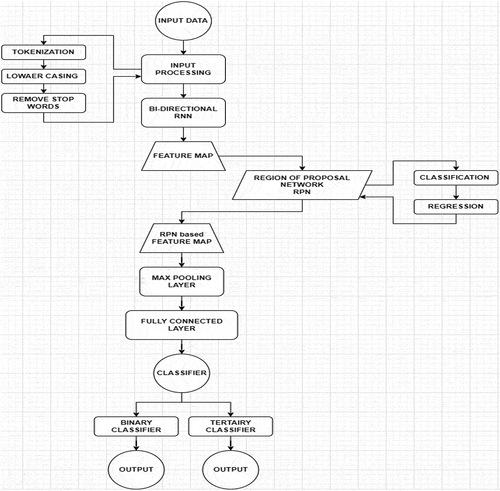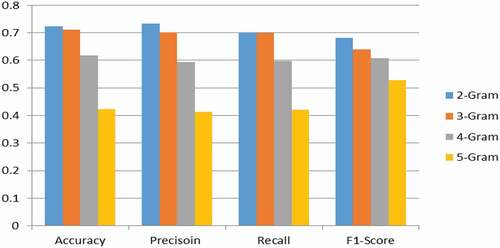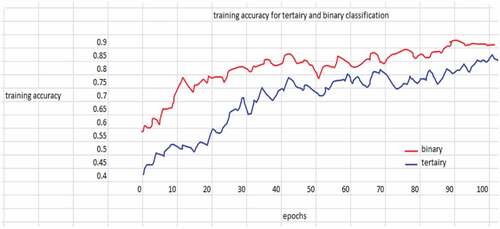Figures & data
Table 1. Result obtained from previous related work.
Table 2. Result obtained from previous work at the linguistic level.
Table 3. Corpus Statistics.
Table 4. Faster RCNN model initial parameters.
Table 5. Special symbols description used for evaluation.
Table 6. Comparative analysis of faster RCNN model for binary and tertiary classification experiment.
Table 7. Comparative analysis of faster RCNN model with RCNN, rule-based approach and N-gram model for binary and tertiary classification.
Figure 9. Assessment of Accuracy, Precision, Recall, and F1 score by binary classification for all models using RUSA-19 Corpus.
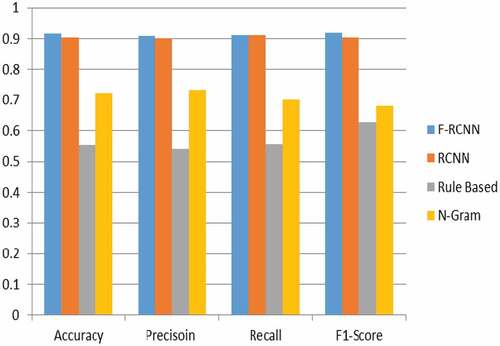
Figure 10. Assessment of accuracy, precision, recall, and F1 score by tertiary classification for all models using RUSA-19 Corpus.
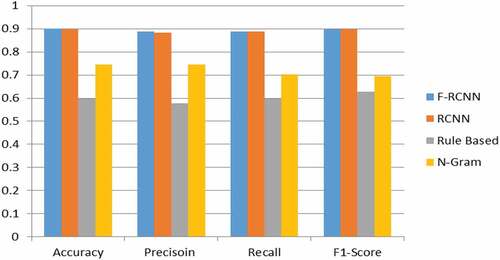
Figure 12. Comparison of Precision, recall, and F1 score of tertiary classification for 2 to 5-gram.
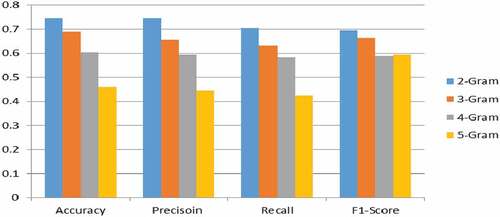
Table 8. Comparative analysis of faster RCNN model in term of speed.





